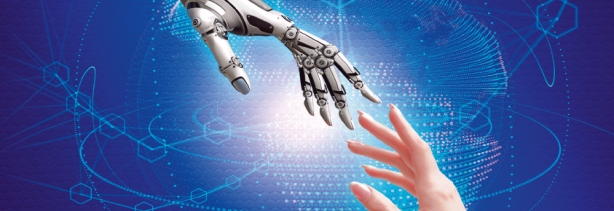
Cloud computing has led to a radical standardization of data and processes, thereby paving the way for a quantum leap in the use of ERP systems. Arjan Vreeke, CEO of ImagineData, is sitting in his office in the year 2045, reflecting on how the world of ERP has changed. And how indications of this change were already there in 2015.
Actually, Vreeke is a bit surprised that the name ERP still exists after all these years, especially when you think of the negative sentiment that surrounded these three letters for many years: “Business leaders got headaches when their CIOs told them they had to invest in ERP. Users were very unhappy with the rigidity of work flows and the user interfacing. And exceeding your budget was sort of standard routine in these projects. But a few decades later this seems to have slipped our minds. ERP now offers organizations and their users an amazing wealth of options. We don’t seem to realize how the seamless user interfaces enlighten our professional lives and interact with our personal lives. We just take them for granted now.”
You might say that the ERP utopia has actually been realized. In hindsight, what do you consider the major drivers for this radical improvement?
“I knew you were going to ask this. And given the fact that 30 years have passed by since then, I can’t recall it in detail as my brain has its human limitations which, unfortunately, have not been remedied by technology to this day. So I did some historical research in my personal cloud. And I’ve learned quite a few things.”
You actually did some digging in your personal archive? We’re curious to hear what you found about this period. It says here that you were the managing director of KPMG Crimsonwing at the time.
“Correct. When I went through my files I stumbled upon a proposal for a client which was very insightful. This client was introducing a new philosophy for his IT landscape with the help of KPMG. This concept was based on a clear distinction between cost-driven processes and value-driven processes. The ERP systems were just fine for cost-driven and routine processes, such as finance. We opted to be very selective in using ERP when it came to all value-driven processes demanding extreme shortening of time to market and a high degree of flexibility. I think that this clear division has saved ERP. In fact, we then started using these systems for what they were ideal for: as a backbone for routine processes.”
Another major driver is what you call ‘”cloud computing” …
“You may not remember this, but 30 years ago some organizations had their own tailor-made IT-environments where they ran their own applications and saved their data. That’s when all this started to evolve into where we are now. So-called ‘cloud providers’ started to offer IT services and storage capacity to clients, followed by built-in data analytics engines and pre-configured solutions. In hindsight, this gave a tremendous boost to IT, as it was the perfect stimulus for the standardization of data and processes. An important side effect was that maintaining high data quality was no longer an issue. At the time, companies were investing lots of money to get the data on their clients right and even had dedicated departments working on this. When everything got interconnected in this ‘cloud’ – which is so obvious now, in 2045 – they no longer had to worry about this. We all took care of our own data and others could simply ‘plug in’. Once this was the norm, a wealth of new possibilities emerged.”
How about the end user of all this technology? What happened there?
“By 2015, consumers had just experienced the first wave of very simple smart phones and tablets and the application ecosystem started to develop itself. We all experienced intuitive and easy-to-use applications on these devices and wondered at the painful contrast with the outdated design of business applications. Tech-savvy consumers demanded that the business world bring them the same experience. Software companies had to meet these expectations and I recall that Microsoft was a real trendsetter in this domain. This company successfully transformed itself to adapt to new business paradigms. One of the things they realized was that to use the full potential of IT, a tremendous user experience was key and that we had to get rid of the rigid concepts used in many ERP environments. In my archive, I read something about a ‘Bring your own device’ concept. Apparently, in 2015 it was not so easy to plug into systems with whatever device or program you wanted. All this has changed now. At the time, none of us could have imagined that one day we could just routinely use our own brain to plug in. We’ve surely come a long way.”
To round this off, what do you consider the main challenge for ERP (Solution) providers nowadays?
“Intelligence has been the name of the game in the past 10 years and will continue to be so in the coming years. In a world where standardization has reached the next level, there is only one way to stand out: intelligence in all your business processes. Spotting a sales opportunity before anyone else. Predicting logistic bottlenecks so that organizations can anticipate. And so on. That’s why all focus is dedicated to developing and deploying the new algorithms that predict opportunities and threats. And that is precisely what we are doing here at ImagineData. Although we deploy standard solutions from the cloud, our in-built intelligence provides real added value to our customers.”
Arjan Vreeke is managing director of KPMG Crimsonwing and a partner of KPMG Management Consulting. He has over 18 years’ experience in ERP consulting and now leads the KPMG Microsoft Business Solution Team of KPMG Crimsonwing. He is both certified and experienced in SAP and Microsoft ERP. KPMG Crimsonwing is a company of 400+ Microsoft ERP/CRM and e-commerce consultants.




